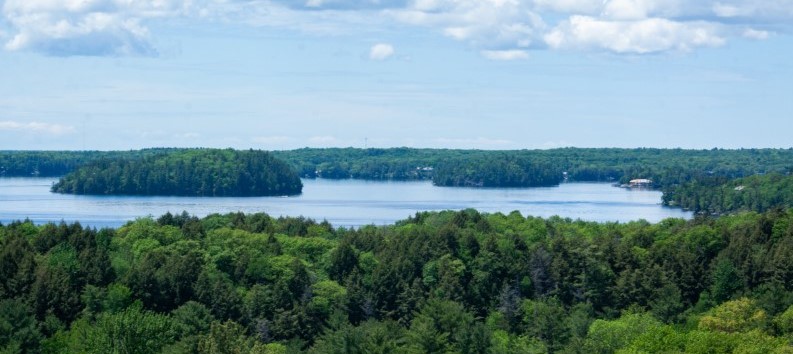Why talk about “models” when we need to stop real floods?
By Geoff Ross

In the many discussions underway about recent flooding in Muskoka, the idea of a “model” for how water moves through Muskoka is perhaps the most misunderstood. A common perception is that a “model” is just a “toy” that is used by scientists but has little connection to the real world. The reality may surprise you.
In this case, a “model” is just a mathematical way of describing how something works. In the simplest form, a “model” of a car trip would say that after 7 hours at an average speed of 100 km per hour you would have gone 700 kilometres. You probably would just call that a simple calculation. But what if the way something works involves a huge number of calculations, the results of each one make a difference to all the others, and the whole thing keeps changing? The only way of understanding how that “something” will work is to put together all the important numbers and calculations so that the answers we get match how the “something” actually works. We call that a “model”.
In case you think “models” are just toys for scientists, and nothing to do with you, think again. On that last vacation, you flew somewhere on a passenger jet. You were in a pressurized metal tube, moving at about 700 km/hr, at an altitude of 33,000 feet, pushed along by powerful but complicated jet engines; yet you got there safely! Designing the complex systems that made this possible and operating that plane during your flight both required help from a whole lot of mathematical “models”. “Models” also ease traffic flow when cities co-ordinate their traffic lights, and “models” save lives when complex medical procedures are required.
There are countless other examples of how our lives are improved or saved because of “models”, even though we seldom realize they are there. “Models” are “built” using real data and are “tested” by seeing if they accurately reproduce reality. “Models” are used to answer questions (such as “will this plane fly”) without risking human life or expending vast sums of money.
So what about our watershed? It’s a complex ecological system, but how does it work?
A good model of how water moves through our watershed (a hydrological model) will give us answers to complicated questions like: “How high will the North Muskoka river rise at Bracebridge if we get 25 millimetres of rainfall per day over the entire watershed for a period of 2 days ?” The model can be “asked” how much water levels will change if a certain amount of snow also melts in the same time period. Or it can be “asked” how the watershed will respond to various possible degrees of climate change. By using models we can tell what kinds of flooding we need to prepare for, before they actually happen. If we wait for those things to happen it will be too late. The model can also tell us how well changes we are considering to reduce flooding will actually work.
Mathematical models help to keep the real world, our lives, and our economy, safe, enjoyable and cost-effective. They are doing this every day, whether we see them or not.
